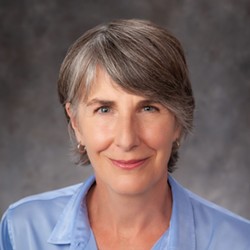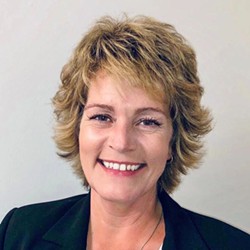The Halifax Regional Municipality’s District 10 has a strong claim to the title of the most changed district since amalgamation.
The district's history dates back to when non-British Protestants first colonized it in the 1750s. At the time, the British, who were establishing the colony of Halifax, called this part of District 10 the Dutch Village.
The community of Fairview that we can recognize today got its start thanks to trains. Fairview is also home to the first fatal railway accident of Atlantic Canada which happened in 1856. Elias Woodworth Sr was driving the engine dubbed Joseph Howe at 9 o’clock on the morning of March 3rd. There was about four inches of ice in the Bedford Basin that engine Joseph Howe smashed through after jumping the track just past Three Mile House at 10 miles an hour and tumbling down the embankment, where it landed wheels up in two or three feet of water. The firefighter Thomas Corcoran was trapped by machinery in the engine for 20 minutes, but was rescued and survived the ordeal with burns and bruises. It is assumed that Woodworth Sr, the locomotive’s engineer, was stunned by the crash and drowned in the few feet of water. The Woodworth family history was destined to be one of tragedy on the rails. Elias Woodworth had a son, Elias Woodworth Jr., also a railroad engineer. Elias Jr, had been killed in a head-on locomotive collision in the fall of 1855.
Fairview really took off when the Canadian National Railroad came to town and opened up Fairview Station 1. This locomotive maintenance shop and roundhouse was the backbone of the local economy until the 1950s. The community kept growing with the construction of Highway 102, but that growth really took off in Clayton Park and westward, thanks to the Shaw brick company.
In the 1960s, Halifax County approved the development of Clayton Park which Shaw Brick and its subsidiary, Clayton Developments, strongly lobbied for. Since amalgamation the Condo farms and cut and paste subdivisions have exploded west, which has swallowed up the Bayers Lake Industrial Park and turned it into the Bayer’s Lake Business Park instead.
And once again, this district is facing massive change. The area around Joseph Howe Drive and Dutch Village Road is seeing a massive increase in density. As it was in the hay days of rail, it’s an integral transportation connection in the HRM. Connecting the Circumferential highway to the 102 via the Windsor Street exchange.
To try to determine which candidates in the election are equipped to face the complex challenges, like transportation, facing the city in the four years to come, The Coast sent out a substantial questionnaire to see what each candidate knows about the issues facing the city. The Coast followed up with more detailed questions to test each candidate's policy chops.
District 10 has two candidates for the municipal election on October 19, and we’re going to start with the one who filled out our questionnaire.
Kathryn Morse
District 10’s Kathryn Morse has had a strong rookie term after being elected in the 2020 municipal election. Before being elected, Morse had experience working for the former Nova Scotia NDP minister of finance, Maureen Macdonald and spent some time working as a journalist for the CBC. With over a decade of experience working in politics, it’s no surprise that Morse had strong answers to the Coast’s questionnaire.
Morse demonstrated a thorough understanding of the problems with past suburban development and has a clear idea of what she wants to see Halifax aim for with the upcoming Suburban Plan writing, “It makes a lot of sense to create more self-sufficient neighbourhoods across HRM where people of all ages and incomes can walk to school, work and the store, rather than having to travel by car for everything. Once these suburban hubs are linked by rapid transit, we will have a better functioning city.”
In a follow-up interview on transportation, Morse explained that in District 10, there are many high-density developments that need better public transit options. Morse says these much-needed transit projects are being delayed due to bad funding allocation decisions and that if re-elected, she’d want to sit on the Transportation Standing Committee.
Speaking of bad resource allocation, Morse has been fighting the city bureaucracy to try to spend just a little more money on much-needed sidewalks in the HRM. Thanks in part to Morse’s work earlier this year, the HRM passed a sidewalk level of service standard which saw a doubling of Halifax’s sidewalk budget which grew from $3 to $6 million a year. The level of service report details that the city needs about 155km of sidewalks, and building all those sidewalks will cost an estimated $75 million over the next decade.
Not to say that this level of service standard is all Morse’s doing, but she was on the audit and finance committee when the auditor general’s Road and Sidewalk Asset Management follow-up report came back to councillors in 2021. The 2019 audit and 2021 follow-up found that the Department of Public Works was not spending money in line with the council’s goals. In 2021, Morse asked then auditor general Evangeline Coleman-Sadd if the public works department had started spending money in line with the council’s goals. Coleman-Sadd answered that by the 18-month follow-up in 2021, she had expected the Department of Public Works to have goals linked to council objectives. But the department had yet to create a process to ensure that public works spending was in line with council’s priorities. Coleman-Sadd also said that the department created targets to meet the council's priorities, but the department never measured their work against those targets and then eventually just ditched their performance targets without reporting any of this in any way, shape or form.
It is possible to follow Morse’s growth as a legislator through this process as she learned about the lack of standards in a municipal department and then worked to correct it with the level of service legislation. Policy-wise, it’s been a solid term for District 10’s rookie councillor. She’s demonstrated some solid legislative governing, and if she were a rookie in any major sport, her team’s management would be looking at terms for a contract extension to see how high this rookie’s ceiling is. Her demonstrated ability in transportation policy shaping is well suited for the next councillor of District 10 as the transportation corridor along Dutch Village Road is fundamentally transformed over the next five years.
Kathryn Morse’s website can be found here: https://www.votemorse.ca/
Debbie MacKinnon
Has not completed The Coast’s candidate questionnaire. If candidates complete the questionnaire after the deadline of September 18. The Coast will attempt to complete a review in time for October’s election. Until then, we cannot determine if this candidate is worth your vote and would advise sticking to the known candidate in your district. If you would like The Coast to assess Debbie MacKinnon’s potential as a councillor, please ask her to complete the questionnaire.
Her website can be found here: debbiemackinnon.ca




